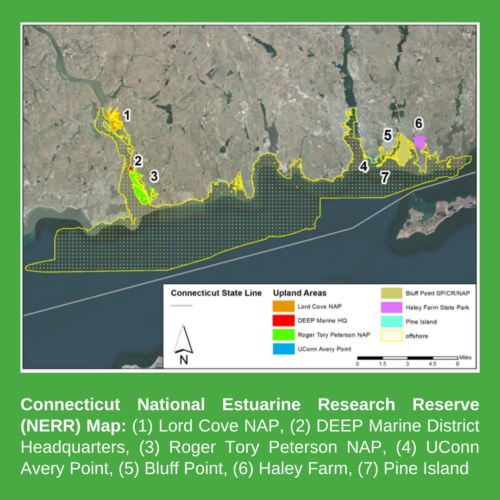
The Nature Conservancy celebrates the establishment of Connecticut’s first National Estuarine Research Reserve (NERR) along southeastern coast of State
LYME/OLD LYME/NEW HAVEN, CONN. – Today, the National Oceanic and Atmospheric Administration (NOAA) announced the establishment of a new National Estuarine Research Reserve (NERR) on Connecticut’s southeastern coast. The new reserve is the 30th in the national reserve system and the first in Connecticut.
“Establishing the Connecticut NERR is a critical step toward enhancing the preservation of Connecticut’s coastal and marine habitats, wildlife and heritage,” said Chantal Collier, director of marine systems conservation at The Nature Conservancy in Connecticut.
She added, “The Nature Conservancy is proud to have worked closely with the Connecticut Department of Energy and Environmental Protection, the University of Connecticut, NOAA and other partners to bring this new level of protection to the Sound that will help us address the challenges facing our estuary and sustain its benefits for local communities.”
The National Estuarine Research Reserve System is a partnership between NOAA and coastal states. NOAA provides guidance and funding while state departments or universities work with local partners to manage the sites day-to-day. The program is designed to protect and study estuaries and their surrounding wetlands—unique ecosystems that exist in the places where rivers meet the sea.
Located along the southeastern coast of the State, the newly announced reserve spans the lower Connecticut River, the lower Thames River, most of the Connecticut waters of eastern Long Island Sound and western Fishers Island Sound, and several state-owned coastal properties in Groton, Old Lyme, and Lyme.
The boundaries of the Connecticut NERR also include traditional lands of the Mashantucket Pequot Tribal Nation, Mohegan Tribe, Western Nehântick Tribal Nation, Hammonasset Tribe, Wappinger Tribe, and Wangunks Tribe.
The Connecticut NERR encompasses a total of 52,160 acres and a range of ecosystems including coastal forests and grasslands, intertidal marshes, beaches and bluffs, rocky reefs, and seagrass meadows, including 36 percent of the vitally important but imperiled Long Island Sound eelgrass ecosystem.
“These coastal and marine habitats are a haven for a wide variety of plants and animals,” said Collier. “From piping plovers, horseshoe crabs and seals that rest or breed along its shores, to sea turtles, dolphins and whales that forage for food in its waters—the range of species that will benefit from this new protected area is tremendous.”
The designation of the new reserve is not the end of the process, however.
“Now, we are turning our attention to supporting effective implementation of the Connecticut NERR Management Plan that was developed by state and local partners. Successful implementation will help ensure that this reserve realizes its environmental, research, and educational potential,” Collier said.
Editor’s Note: This article is based on a press release from The Nature Conservancy in Connecticut.